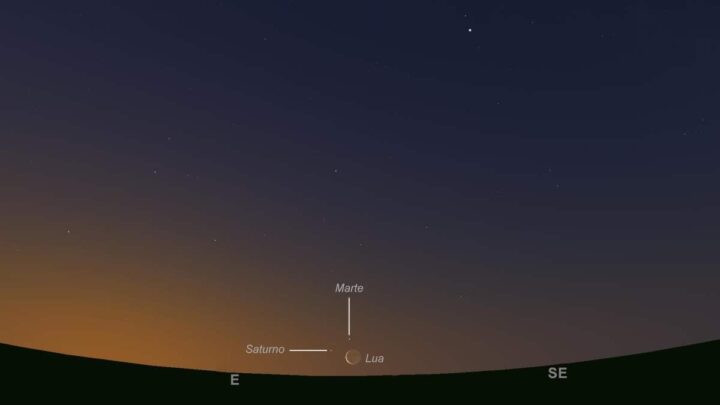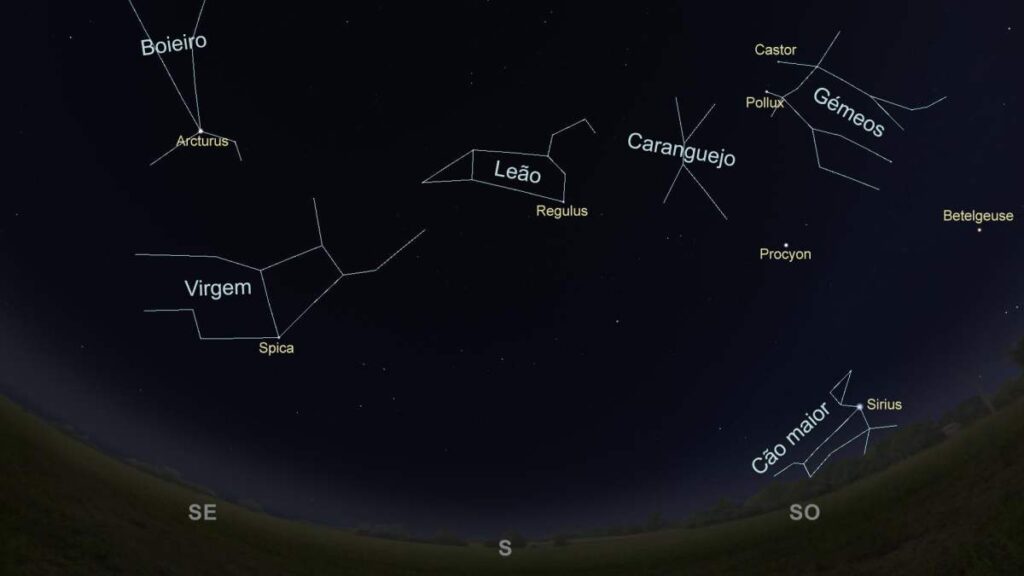This month, seeing planets will not be an easy task.
Venus, Mars and Saturn are visible at dawn, but very low on the horizon and only rise with dawn, so the Sun's light will make their observation difficult.
Venus, which is getting closer and closer to the Sun in the sky, has practically disappeared. As for Mars and Saturn, they still rise around 6 am at the beginning of the month, but they are seen around 5 am at the end of the month.
The planet Jupiter can still be seen at dusk, more or less in the direction of sunset. However, throughout this month, it rises lower and lower, so you can see it for less and less time. On the 30th, it can only be seen for about half an hour, passing quickly below the horizon.
Right at the beginning of April, there was an observation challenge – a cosmic meeting at dawn on the 6th. Around 06:15 am and until sunrise (which occurred shortly afterwards), whoever had a completely clear horizon facing East, could observe a small (practically) equilateral triangle, made up of the planets Saturn, Mars and a thin waning Moon, with the distance between each of the stars being around 3 degrees. For reference, at an outstretched arm's length, your little finger occupies about 1 degree in the sky.
Unfortunately, this conjunction will only be visible with dawn, so the Sun's light will make it very difficult to observe Mars and Saturn. To make things even more difficult, the three stars are very close to the horizon – our Moon will be around 2 degrees above the horizon, Saturn at around 3 degrees and Mars at around 4,5 degrees. As the Sun rises at around 07:10 am, the planets will only be visible for half an hour, or even less time.

On the 8th, our satellite reaches the new moon phase. On the 10th, a very thin crescent of the Moon passes 3 degrees from Jupiter, at dusk. The next day, the planets Mars and Saturn will be in conjunction, separated by just half a degree!
On the 15th, the Moon reaches the quarter crescent.
On the 22nd, the Lyrids meteor “shower” peaks. The “rain” owes its name to the constellation of Lyra, where the radiant is located (the point from which all meteors seem to emanate). This constellation rises around 22 pm.
But despite this “rain”, resulting from the Earth's passage through the trail of comet C/1861 G1 (Thatcher), producing several meteors with bright trails visible for several seconds, this year the observation will be unfavorable, as the moon will be practically full .
On the 23rd, the full moon occurs.
Closing the month, on the 30th, the constellation Leo is passing to the south, very high in the sky, even at dusk. In Greek mythology, this was the Nemean Lion, associated with the first of the twelve labors of Hercules. This lion terrorized the population of Nemea and as its hide was impenetrable, no one could stop it. Hercules had no better success with his weapons, having ended up killing the animal by strangulation. This is believed to be one of the possible origins for the name of the martial arts chokehold known as “rear naked choke”.
Good remarks!



















Comments